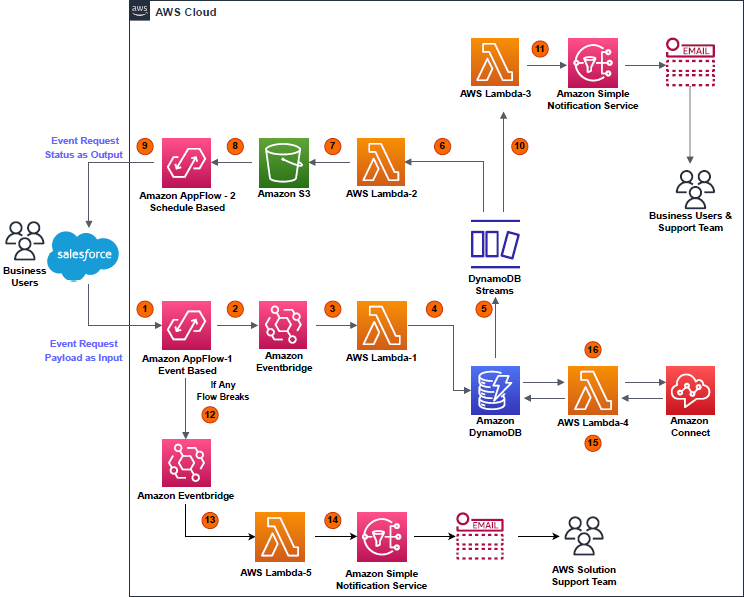AWS Architecture Blog
Category: Application Integration
Building an event-driven solution for AvalonBay property leasing and search
In this blog post, we show you how to build an event-driven and serverless solution for property leasing and search that is scalable and resilient. This solution was created for AvalonBay Communities, Inc.—a leading residential Real Estate Investment Trusts (REITs). It enables: More than 150,000 multi-parameter searches per day The processing of more than 3,500 […]
Text analytics on AWS: implementing a data lake architecture with OpenSearch
Text data is a common type of unstructured data found in analytics. It is often stored without a predefined format and can be hard to obtain and process. For example, web pages contain text data that data analysts collect through web scraping and pre-process using lowercasing, stemming, and lemmatization. After pre-processing, the cleaned text is […]
Maintain visibility over the use of cloud architecture patterns
Cloud platform and enterprise architecture teams use architecture patterns to provide guidance for different use cases. Cloud architecture patterns are typically aggregates of multiple Amazon Web Services (AWS) resources, such as Elastic Load Balancing with Amazon Elastic Compute Cloud, or Amazon Relational Database Service with Amazon ElastiCache. In a large organization, cloud platform teams often […]
A multi-dimensional approach helps you proactively prepare for failures, Part 3: Operations and process resiliency
In Part 1 and Part 2 of this series, we discussed how to build application layer and infrastructure layer resiliency. In Part 3, we explore how to develop resilient applications, and the need to test and break our operational processes and run books. Processes are needed to capture baseline metrics and boundary conditions. Detecting deviations […]
Integrating Salesforce with AWS DynamoDB using Amazon AppFlow bi-directionally
In this blog post, we demonstrate how to integrate Salesforce Lightning with Amazon DynamoDB by using Amazon AppFlow and Amazon EventBridge services bi-directionally. This is an event-driven, serverless-based microservice, allowing Salesforce users to update configuration data stored in DynamoDB tables without giving AWS account access from AWS Command Line Interface or AWS Management Console. This […]
Extending your SaaS platform with AWS Lambda
Software as a service (SaaS) providers continuously add new features and capabilities to their products to meet their growing customer needs. As enterprises adopt SaaS to reduce the total cost of ownership and focus on business priorities, they expect SaaS providers to enable customization capabilities. Many SaaS providers allow their customers (tenants) to provide customer-specific […]
How to track AWS account metadata within your AWS Organizations
United Services Automobile Association (USAA) is a San Antonio-based insurance, financial services, banking, and FinTech company supporting millions of military members and their families. USAA has partnered with Amazon Web Services (AWS) to digitally transform and build multiple USAA solutions that help keep members safe and save members’ money and time. Why build an AWS […]
Use direct service integrations to optimize your architecture
When designing an application, you must integrate and combine several AWS services in the most optimized way for an effective and efficient architecture: Optimize for performance by reducing the latency between services Optimize for costs operability and sustainability, by avoiding unnecessary components and reducing workload footprint Optimize for resiliency by removing potential point of failures […]
Let’s Architect! Serverless architecture on AWS
Serverless architecture and computing allow you and your teams to focus on delivering business value in place of investing time tweaking the infrastructure characteristics. AWS is not only providing serverless computing as a service, but share that half of our new applications built by Amazon are using AWS Lambda, as noted by Andy Jassy in […]
Let’s Architect! Using open-source technologies on AWS
With open-source technology, authors make software available to the public, who can view, use, or change it and add new features or support new capabilities. Open-source technology promotes collaboration across different teams, organizations, and people because the process often includes different perspectives and ideas, which typically results a stronger solution. It can be difficult to […]








